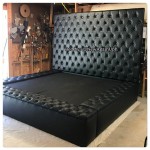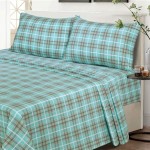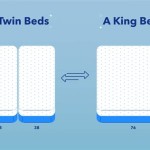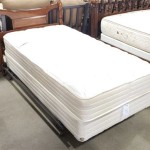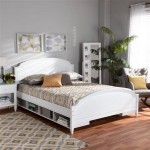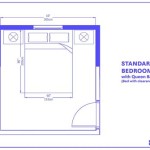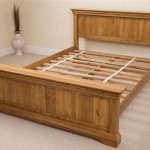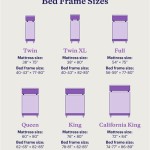Queen Bed Frames for Plus Size Individuals: A Comprehensive Guide
Selecting a queen bed frame can be a significant decision, particularly for plus-size individuals. The standard load-bearing capacity of many bed frames often proves inadequate, leading to premature wear, instability, and potential safety hazards. This article provides a comprehensive guide to choosing a queen bed frame specifically designed to accommodate the needs of plus-size sleepers, focusing on durability, support, and longevity.
The weight capacity of a bed frame is a crucial factor. It's not simply the weight of the individuals using the bed, but also the weight of the mattress, bedding, and any additional items placed on the bed. Underestimating this combined weight can drastically shorten the lifespan of the frame and compromise its structural integrity. Therefore, opting for a frame with a significantly higher weight capacity than the estimated load is a prudent approach.
Material selection plays a critical role in the overall strength and durability of a queen bed frame. While aesthetically pleasing designs are important, the underlying construction materials are paramount for providing long-lasting support. Reinforced metal frames, solid hardwood frames, and combinations of both are generally the most reliable choices for plus-size individuals.
The bed frame's design also contributes significantly to its ability to withstand weight. Frames with cross slats or center support legs offer enhanced stability and distribute weight more evenly across the entire structure. The number and thickness of slats are important considerations. Closer spacing between slats and thicker slats generally indicate a stronger and more robust frame.
Beyond the frame itself, the foundation upon which it rests plays a crucial role. Placing a sturdy bed frame on an uneven or weak floor can negate many of its weight-bearing benefits. Ensure the floor is level and capable of supporting the total weight of the bed, frame, and occupants. Reinforcing the floor beneath the bed frame may be necessary in some cases, particularly in older homes with potentially weakened floorboards.
Key Point 1: Evaluating Weight Capacity and Frame Materials
The primary concern when selecting a queen bed frame for plus-size individuals is undoubtedly weight capacity. Bed frames typically specify a maximum weight limit, but understanding how this limit is determined is equally important. Manufacturers often test their frames under static load conditions, meaning the weight is evenly distributed and remains constant. However, real-world use involves dynamic loading, where weight shifts, is applied unevenly, and experiences sudden impacts. To compensate for this, it's advisable to select a frame with a weight capacity exceeding the anticipated load by at least 20-30%.
Metal frames constructed from heavy-gauge steel are a popular choice due to their inherent strength and resistance to bending. Look for frames with welded joints rather than bolted connections, as welded joints offer superior durability and are less likely to loosen over time. Powder coating provides an additional layer of protection against rust and corrosion, further extending the lifespan of the frame.
Solid hardwood frames, particularly those made from hardwoods like oak, maple, or birch, offer exceptional strength and stability. However, the type of joinery used is critical. Dovetail joints, mortise and tenon joints, and other interlocking joinery methods provide a much stronger connection than simple screws or nails. Ensure the wood has been properly kiln-dried to minimize the risk of warping or cracking.
Some frames combine metal and wood elements, leveraging the strengths of both materials. For example, a frame might feature a steel frame for primary support with wooden slats or decorative elements. These hybrid designs can offer a good balance of strength, aesthetics, and cost.
Avoid frames made from particleboard or engineered wood, as these materials are generally less durable and more prone to damage under heavy loads. While they may be more affordable, their shorter lifespan and potential for failure can ultimately lead to higher costs in the long run.
Key Point 2: Understanding Frame Design and Support Structures
The design of a queen bed frame significantly impacts its ability to distribute weight evenly and provide adequate support. Frames with multiple center support legs are particularly beneficial for plus-size individuals, as these legs prevent the slats from sagging in the middle. The number of support legs required will vary depending on the frame's overall design and weight capacity.
The slat system is another critical component. Solid wood slats, particularly those made from hardwoods, offer superior support compared to thinner, flexible slats. The spacing between slats is also important; closer spacing provides more even weight distribution and prevents mattresses from sagging or slipping through the gaps. A good rule of thumb is to aim for slat spacing of no more than 2-3 inches.
Consider frames with a platform design if you prefer a more modern aesthetic. Platform beds typically feature a solid or closely spaced slat system that eliminates the need for a box spring. This design can provide excellent support and stability, particularly when constructed from durable materials.
Reinforced side rails are another important feature to look for. The side rails are the primary structural components of the frame, and they must be strong enough to withstand significant stress. Frames with thicker side rails or those reinforced with metal brackets are generally more durable. Look for side rails that are securely attached to the headboard and footboard using robust hardware.
Pay attention to the height of the bed frame. A higher bed frame may be more comfortable for individuals with mobility issues, while a lower frame may be more stable and less prone to tipping. Choose a height that suits your individual needs and preferences, while ensuring the frame remains sturdy and well-supported.
Key Point 3: Additional Considerations for Longevity and Stability
Beyond the core structural elements, several additional factors can contribute to the longevity and stability of a queen bed frame for plus-size individuals. Implementing these practices can significantly extend the lifespan of the frame and ensure a comfortable and safe sleeping experience.
Regularly inspect the bed frame for loose bolts, cracked wood, or any other signs of damage. Tighten any loose fasteners promptly to prevent further deterioration. Address any structural issues immediately to avoid more significant problems down the line. A periodic inspection, performed every few months, can help identify and address potential issues before they escalate.
Consider using a bed frame support system, particularly if you notice any sagging or instability. These support systems typically consist of adjustable legs that provide additional support beneath the slats or frame. They can be particularly helpful for frames with longer spans or those experiencing uneven floor conditions.
Rotate and flip your mattress regularly to promote even wear and prevent sagging. This is particularly important for heavier mattresses. Following the manufacturer's instructions for mattress care can significantly extend its lifespan and maintain its supportiveness.
Avoid placing excessive weight on the edges of the bed, as this can strain the frame and contribute to sagging. Distribute weight evenly across the bed surface whenever possible. Train yourself and any other occupants to avoid sitting or leaning heavily on the edges of the bed for extended periods.
When moving the bed frame, disassemble it carefully and avoid dragging or dropping any of the components. Use proper lifting techniques to prevent injury and avoid damaging the frame. Store the frame in a dry, protected environment to prevent rust or wood rot. Proper care during transportation and storage can significantly extend the lifespan of your bed frame.
Choosing the right queen bed frame for plus-size individuals involves careful consideration of weight capacity, material selection, frame design, and additional factors that contribute to longevity and stability. By prioritizing these aspects, one can ensure a comfortable, safe, and supportive sleeping environment for years to come.

Platform Large Tufted Bed Extra Wide Frame Crystal Upholstered Headboard California King Queen Full Twin Custom Made Etsy Australia

Upholstered Platform Bed Queen Size Velvet With Wingback Headboard And 1 Big Drawer Wood Frame 2 Side Storage Stool For Teens Adults Bedroom Furniture Blue Wal Com

Uhomepro Upholstered Platform Bed Frame Queen Size Storage With Wood Slat Support Button Tufted Velvet Headboard Big Drawer No Box Spring Required Pink Wal Com

Upholstered Platform Bed Queen Frame With Wingback Headboard And One Big Drawer Wood Slats Support For Teens Adults Pink Wal Com

Softframe Bed Frames Designs

Queen Size Storage Metal Platform Bed With A Big Drawer Beige

Queen Size Upholstered Platform Bed Frame With 1 Big Drawer And 2 Side Storage Stool Support Legs Wooden Slats Mattress Foundation No Box Spring Needed In Velvet Blue Wal Com

Harper Bright Designs Gray Wood Frame Queen Upholstered Platform Bed With Wingback Headboard 2 Side Storage Stool And 1 Big Drawer Qmy079aae The Home

Syngar Queen Size Fully Velvet Upholstered Platform Bed Frame With Wingback Headboard And Big Storage Drawer Strong Mattress Foundation Frames For Kids Teens Adults Beige Wal Com

The 3 Best Platform Bed Frames Under 300 Of 2024 Reviews By Wirecutter

